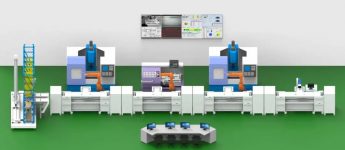
Industrial intelligent manufacturing production line applies RFID technology to realize production visualization management
[ad_1]
With the gradual promotion of automation and informatization, industrial intelligence has always attracted attention. For manufacturers, the information of various links such as the process flow of the production line is very important. As an important core component of the perception layer of the Internet of Things, RFID can realize intelligent identification and collection of data without contact and perception. The Internet of Things technology allows different devices to be interconnected through RFID electronic tags. The industrial manufacturing environment is very complex. Through the use of RFID electronic tags, RFID readers, and bar code, PLC and other technologies, real-time data collection of materials, work in progress, execution equipment, tooling and other multi-source links are provided for production and operation control. Basic data can effectively improve production efficiency.
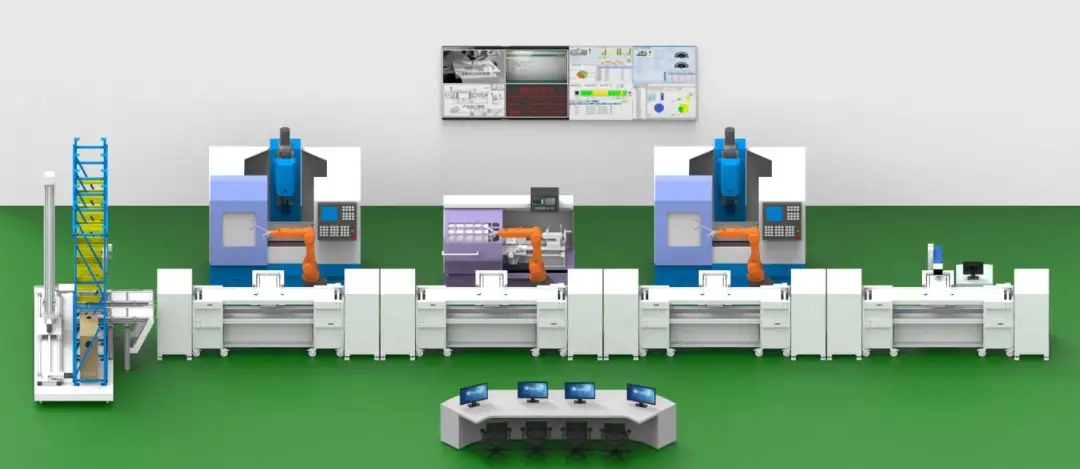
Under the requirements of diversified production technology, the industrial intelligent manufacturing production line uses RFID technology to automatically identify and collect data. RFID technology is not just a simple replacement of bar code technology. RFID technology can read and write wirelessly and remotely. It has strong penetrability and can be used at high speeds. It is collected in a mobile state, and the stored data information is larger, which can meet the use of harsh environments. RFID readers and RFID electronic tags are combined with production line information technology and photoelectric technology to complete automated production. RFID technology has been widely used in production control, the establishment of visual management of production lines, intelligent management and control in production process control, and RFID facilitates the visualization of intelligent manufacturing.
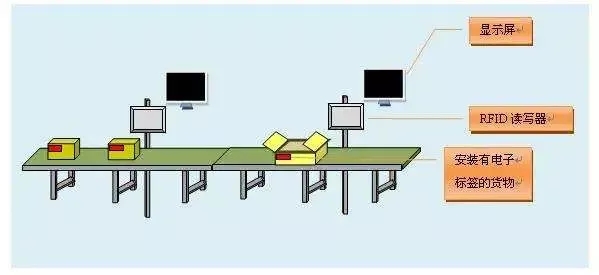
System flow: When a product with RFID tags passes through RFID reader A and RFID reader B in sequence, the RFID reader will read the RFID electronic tag information on the product and upload the data to System host computer. And then judge the completion of the products in production and the operation of each station.
Application of production line RFID readers in intelligent manufacturing production lines
01, data collection
Attach the RFID tag to the produced material or the pallet containing the material, and record the product specifications, quantity, time, responsible person and other related information on it, instead of traditional manual recording; production management personnel can read it at any time through the reader Get product information; other relevant personnel can grasp the production status in time and adjust the production schedule according to the situation, as well as control the flow of materials at any time.
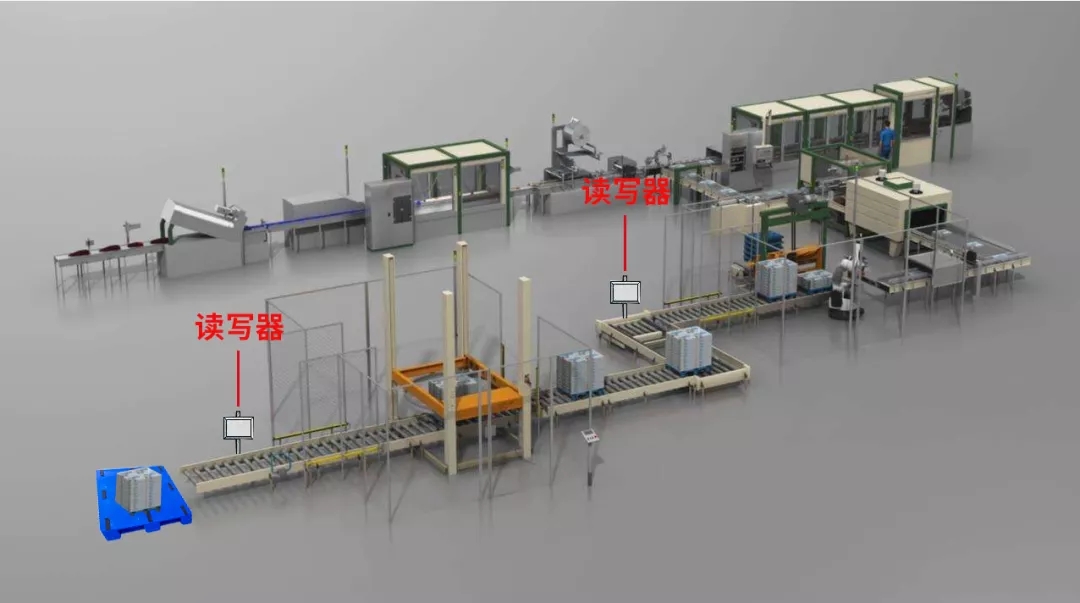
02, data transmission
Install reading and writing equipment at each collection point. When materials or pallets with RFID electronic tags pass through the collection point, the RFID reading and writing equipment will automatically obtain the information of the material and transmit it to the background, and the manager can accurately know where the material is through the background. s position.
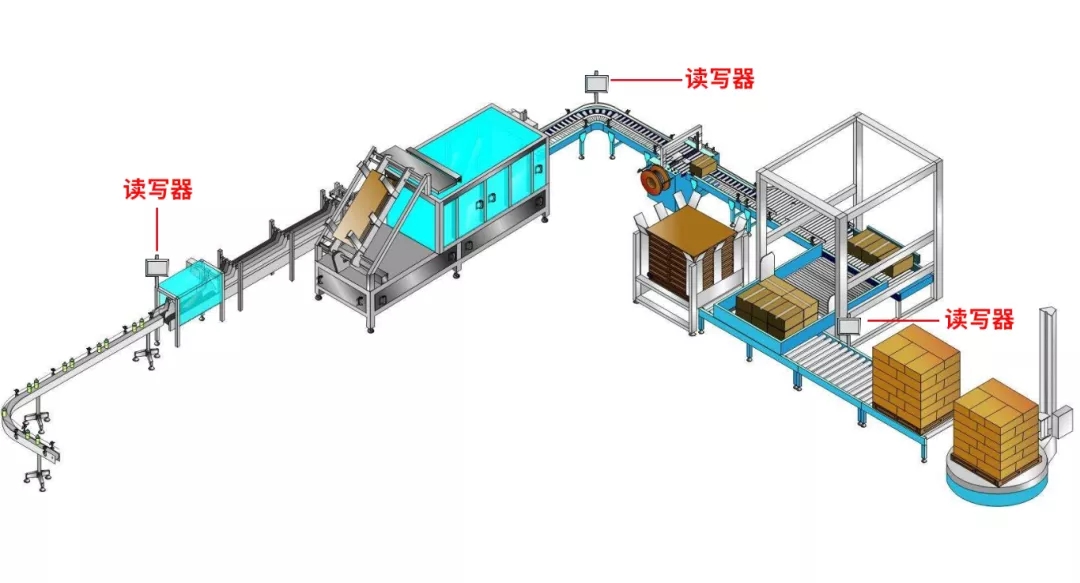
03. RFID main equipment composition
RFID equipment is mainly composed of RFID electronic tags, RFID fixed readers, RFID antennas, RFID handheld devices and RFID cables.
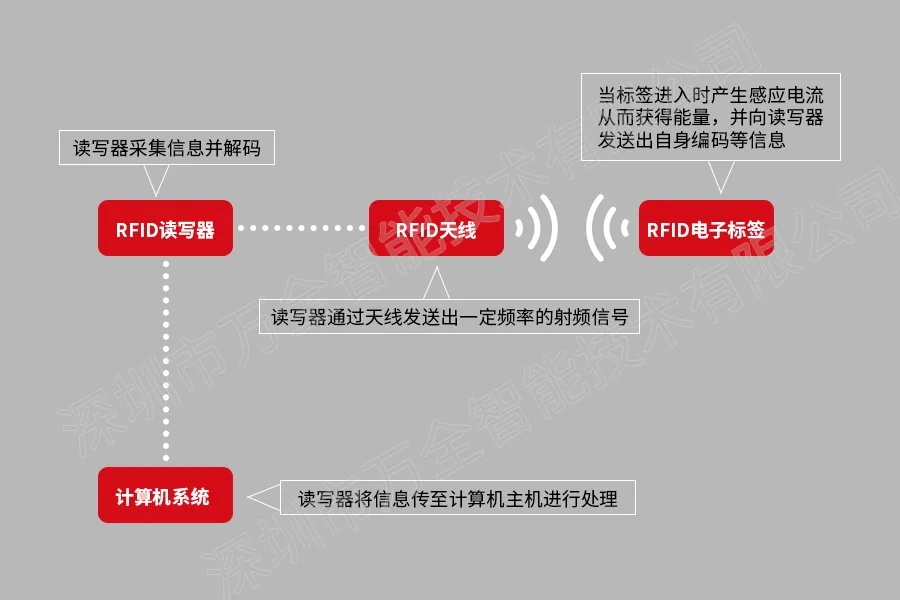
Principle of RFID production line process management system
1. Install RFID readers and RFID antennas at the process points that need to be controlled on the production line, and install RFID tags on the tooling boards or material boxes that carry the products.
2. Before starting production, use the production management system to match the RFID tag ID fixed on the tooling board or material box with the production batch number, that is, read the RFID tag ID on the tooling board or material box through the RFID reader, and pass The barcode gun scans the production barcode, and the management system binds the RFID tag ID with the production barcode on the product.
In this way, managers can learn from the system which processes the products on the production line have gone through, so as to accurately grasp the data, understand the production progress of the products and the work conditions of the employees.
3. The production information (such as name, number, batch, etc.) generated in the production interface of the management software is written into the RFID tag through the RFID reader. After the writing is correct, the work in process is sent to each process for production.
4. Every time the work in process reaches a controlled process point, the RFID reader will write the process content and process point information into the RFID tag, transmit the production data to the server through the network, and update the database in real time.
5. After reaching the last process point, the RFID reader reads the RFID tag information on the tooling board or the material box to the production management software. The production management software counts the number of processes for the product. If there is any omission, the missing process can be traced. The operator can return the product to the missing process point for rework processing, and complete the production if the number of processes is correct.
6. For the finished products, the production management system automatically unbinds the RFID tag and the production barcode, and stores the production barcode as a unique identification code in the database to provide a basis for future product traceability.
Summarize
RFID technology can be called RFID radio frequency identification technology. It is mainly the work between the RFID reader and the RFID electronic tag. Data communication can achieve data exchange, and then automatic identification. RFID technology realizes batch management data, real-time feedback of production line information, and improves management efficiency. Make the production process stable, RFID equipment can work in harsh environments, ensure data integrity and reliability, ensure stable production of production line products, understand the specific production situation of the product, and deploy the production status in time. Real-time statistics of the production progress of each group, each station, and process provide the managers with accurate data, improve production efficiency, reduce manual input, and improve the transparency and visual management of the production line.
[ad_2]



